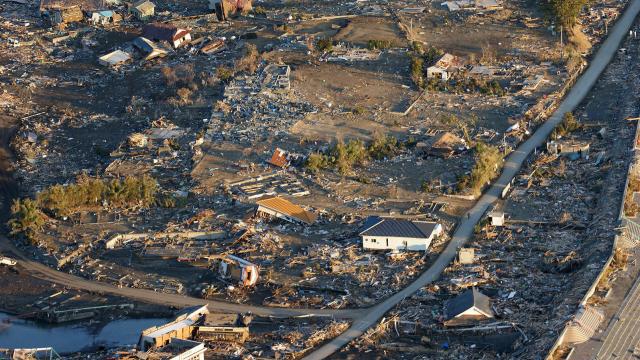Plans have been announced to convert abandoned areas in Fukushima to a renewable energy hub, a scheme that will involve the construction of new solar plants, wind farms, and a power transmission grid that will feed Tokyo with electricity.
It’s been eight years since an reports, Japan is hatching a plan to convert the area into a haven for renewable energy.
The plan calls for 11 solar plants and 10 wind farms to be built on land in the Fukushima prefecture that “cannot be cultivated anymore and mountainous areas from where population outflows continue,” according to Nikkei.
Nearly 43,000 Japanese citizens remain displaced by the disaster”many of whom are understandably wary about returning home, despite the government’s assurances.
Meanwhile, the Tokyo Electric Power Company (TEPCO), which operates the ruined nuclear power plant, says the facility may not be completely decommissioned until the 2050s. And then there are Fukushima’s three Evacuation-Designed Zones to consider, which encompass 371 square kilometres of space, or nearly 3 per cent of the prefecture’s total area.
If the Fukushima nuclear disaster is essentially a gigantic lemon, then Japan is now trying to make some lemonade in the form of this renewable energy hub. The new facilities are expected to be completed by March 2024 at an estimated cost of $4 billion. A line of credit to partially support the cost of the project will be provided by the state-run Development Bank of Japan and the privately owned Mizuho Bank according to Nikkei.
The hub is expected to produce around 600 megawatts of electricity. That’s a fraction of the nearly 4,700 megawatts the former nuclear plant was capable of producing, but will still be enough electricity to power 114,000 average American homes. The project also calls for the construction of a grid connected to TEPCO’s main backbone grid that can be used to transmit electricity to Tokyo.
This new plan is consistent with prefecture’s goal of having renewable energy supply 40 per cent of its demand by 2020, two-thirds by 2030, and 100 per cent by 2040, according to the Japan Times.
This plan is reminiscent of a China-backed scheme to build solar power stations in the Chernobyl Exclusion Zone, the only other area on Earth ravaged by a nuclear meltdown. There’s a curious poetic irony to these plans, in which areas wrecked by power plants can still be used to generate power. Life is weird.
